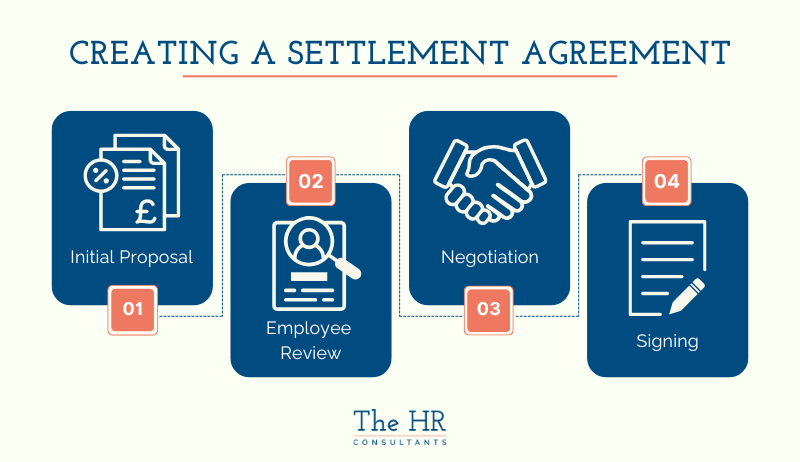"At its core, a settlement agreement is a legally binding contract between an employer and an employee, typically used to resolve disputes or end employment on mutually agreed terms. You might have heard these referred to as ""compromise agreements"" in the past, but the terminology changed under the Employment Rights Act 1996. While the names differ, the principle remains the same: to provide a clear resolution that avoids legal fees and disputes.
Understanding the ins and outs of settlement agreements is vital for business owners and managers. These agreements not only protect your business but can also ensure a fair outcome for employees. At The HR Consultants, we know that a settlement agreement is a unique and important part of employment law that cannot be ignored.
So, what exactly makes a settlement agreement different from any other employment contract? Let’s dive in to uncover everything you need to know.
Table of Contents
- How Does A Settlement Agreement Work?
- Why Do Employers Use Settlement Agreements?
- What Should Be Included in a Settlement Agreement?
- How Much Is a Typical Settlement Agreement Payout?
- Is a Settlement Agreement the Same as Redundancy?
- Tips for Negotiating a Settlement Agreement
- Case Studies: Real-Life Examples of Settlement Agreements
- Final Thoughts
- Frequently Asked Questions
How Does A Settlement Agreement Work?
Settlement agreements are designed to simplify what could otherwise be a stressful and lengthy process. But how does the process actually work according to the Employment Rights Act?
Typically, the process starts when an employer presents a settlement agreement to an employee. This could follow discussions about redundancy, performance issues, or workplace disputes. Once the offer is made, the employee is given a reasonable amount of time to review the agreement—often around 7–14 days, though this can vary.
Here’s how it usually unfolds:
- Initial Proposal: The employer outlines the key terms, such as financial compensation, notice periods, and confidentiality clauses.
- Employee Review: The employee consults with an independent legal adviser to ensure the terms are fair and legally sound (a legal requirement under UK law).
- Negotiation: Adjustments may be made to the terms if the employee or their adviser requests changes.
- Signing: Once both parties are satisfied, the agreement is signed, making it legally binding.

A well-handled settlement agreement ensures clarity for both sides, allowing everyone to move forward with confidence and without lingering uncertainties. It’s about creating a win-win outcome—efficient, fair, and stress-free.
The Role of Employer and Employee
For employers, the role is to ensure the settlement agreement is presented clearly, professionally, and in line with legal requirements. This involves outlining key terms such as financial compensation, notice periods, and confidentiality clauses. Employers should also allow the employee sufficient time to review the agreement—typically 7 to 14 days—and be prepared to discuss or negotiate the terms if necessary. A transparent and fair approach helps to build trust and ensures a smoother resolution process.
For employees, the focus should be on carefully reviewing the agreement and seeking advice from an independent HR or legal adviser. This step is not just recommended but legally required to ensure the terms are fair and protect the employee’s interests. Employees should take this opportunity to assess all aspects of the agreement, from financial terms to non-financial clauses such as post-termination restrictions, to make sure their rights and prospects are fully safeguarded.
Why Do Employers Use Settlement Agreements?
There are a range of reasons why a settlement agreement may be proposed. Let's unpack them and look at some real-life scenarios.
Redundancy Situations
Settlement agreements are often used during redundancy processes to ensure clarity and fairness for all parties. They provide employees with financial compensation while protecting the business from potential disputes, creating a smooth and amicable transition.
Addressing Performance Issues
When an employee’s performance consistently falls short despite interventions, a settlement agreement allows employers to part ways professionally. This ensures the employee is treated fairly while the business maintains its operational standards.
Resolving Workplace Disputes
Workplace disputes, such as conflicts between colleagues or allegations of misconduct, can disrupt team dynamics. A settlement agreement helps resolve these issues quickly, allowing everyone to move forward without prolonged tensions.
Avoiding Legal Risks
Settlement agreements minimise the risk of future legal claims, such as unfair dismissal claims or discrimination. They offer employers peace of mind by ensuring that any potential issues are resolved definitively and in compliance with employment law.
Protecting Confidential Information
Including confidentiality clauses in settlement agreements allows businesses to safeguard sensitive information. This is particularly important when parting ways with employees who had access to proprietary or strategic data.
By addressing these scenarios proactively, employers can maintain workplace harmony, protect their business interests, and support employees fairly and professionally. It’s an approach that balances both legal compliance and human-centric management.
What Should Be Included in a Settlement Agreement?
Settlement agreements aren’t just about signing on the dotted line; they’re detailed contracts that include essential terms and conditions. Whether you’re an employer drafting such an agreement or an employee reviewing one, understanding what should be included is vital. Let’s break it down.
Key Terms and Clauses
Settlement agreements typically cover both financial and non-financial elements, ensuring clarity for both parties.
Financial Elements
- Compensation for loss of office: This is the financial payment offered to the employee, often as compensation for giving up certain rights, like bringing legal claims. The amount varies depending on factors like length of service and role, but typical payouts can range from a few thousand pounds to much more for senior positions.
- Notice payments: If the employee is not required to work their notice period, this payment ensures they’re still compensated for that time.
- Bonuses and commissions: Any unpaid bonuses or commissions due should be included in the agreement. Employers need to outline how these payments will be calculated and paid.
- Pension considerations: If the employee is part of a workplace pension scheme, the agreement should clarify how contributions will be handled during the transition.
Non-Financial Elements
- Confidentiality clauses: These are often included to protect sensitive business information, such as trade secrets or internal processes.
- Post-termination agreements: These might include restrictions on the employee working for competitors or soliciting former colleagues or clients for a set period. For example, an agreement might state that the employee cannot work for a competitor within the same region for six months.
Actionable tip: If you’re an employee, always check for terms that might limit your future career options. Seek clarification or negotiate if needed. If you're unsure about what these could be then talk to us for advice.
How Much Is a Typical Settlement Agreement Payout?
One of the most common questions about settlement agreements is, ""How much money should I get?"" Unfortunately, there’s no one-size-fits-all answer. Payouts depend on several factors, but here’s what you need to know.
Factors That Influence Settlement Payouts
- Length of employment: Generally, the longer you’ve been with the company, the higher your payout is likely to be.
- Age: Older employees may receive more due to additional considerations like redundancy payments or difficulty finding new roles. Unfortunately, prejudice due to age is still a real issue in the job market.
- Annual income: Higher earners often receive larger settlements, as payouts often reflect their salary level.
Comparison With Tribunal Awards
In many cases, a settlement agreement is more attractive than pursuing a tribunal claim. Why? Because it’s quicker, less stressful, and avoids the uncertainty of a tribunal’s decision. For context, the average employment tribunal award for unfair dismissal is around £10,000, but payouts under settlement agreements can sometimes exceed this, especially when factoring in non-financial benefits like positive references or extended notice payments.
Tax Implications
It’s important to note that the first £30,000 of a settlement payment is usually tax-free under HMRC guidelines. However, any amount above this may be subject to tax and National Insurance contributions. Make sure the agreement spells this out clearly.

Employers should ensure payouts reflect the value of resolving disputes amicably, while employees should verify the financial terms with a legal adviser to avoid unexpected tax deductions.
Is a Settlement Agreement the Same as Redundancy?
No, but the two can overlap. Let’s unpack the similarities and differences to clear up any confusion.
Differences and Similarities
A redundancy occurs when an employee’s role is no longer needed, whereas a settlement agreement is a voluntary legal contract to resolve disputes or end employment. While redundancies often lead an employer to offer settlement agreements, the two terms are not interchangeable.
For instance, in a redundancy situation, statutory claims may apply. A settlement agreement could include this alongside other terms, like an enhanced payout or a confidentiality clause.
If Redundancy Is Involved
If you’re being made redundant, ensure the agreement reflects your full entitlements. This includes statutory redundancy pay (if applicable), notice pay, and any additional compensation. Remember, you have the right to negotiate, especially if you believe the redundancy terms are unfair or insufficient.
Tips for Negotiating a Settlement Agreement
Negotiating a settlement agreement can feel daunting, but it doesn’t have to be. Here are some practical tips to help you navigate the process with confidence.
Ensuring Terms Are Fair
Start by understanding your worth. Consider factors like your salary, length of service, and the circumstances leading to the agreement. Employers should ensure the terms are attractive enough to avoid prolonged disputes, while employees should assess whether the compensation and terms reflect their contributions and the situation.
Pitfalls To Avoid
- Rushing the process: Take your time to review the agreement thoroughly, ideally with legal advice. Don’t feel pressured to sign immediately.
- Ignoring future implications: Check for restrictive clauses that might limit your career options, such as non-compete agreements.
- Overlooking tax implications: Ensure the agreement specifies which parts of the payout are tax-free and which aren’t.
Whether you’re an employer or employee, transparency and open communication can help you avoid unnecessary tension during negotiations.
Case Studies: Real-Life Scenarios
We'll now look at how settlement agreements can seal positive solutions to some challenging scenarios.
Example 1: Redundancy
An employee in a manufacturing company was offered a settlement agreement during a redundancy process. By negotiating and knowing their worth, they secured an enhanced redundancy payment and a positive reference, allowing them to transition smoothly to a new role.
Example 2: Performance Issues
A retail manager with ongoing performance challenges was offered a settlement agreement. The agreement included compensation for three months’ salary and a confidentiality clause, ensuring a professional parting of ways.
Example 3: Workplace Disputes
A senior IT professional faced conflict with a colleague. The settlement agreement allowed them to leave with a fair payout and a clause preventing either party from discussing the details publicly, preserving their reputation.
Final Thoughts
Settlement agreements are powerful tools for resolving employment disputes and ensuring a clean break for both parties. Whether you’re an employer looking to protect your business or an employee seeking fairness, understanding these agreements is key. Take the time to review all terms carefully and don’t hesitate to seek expert advice.
Seek Expert Advice
Expert advice can make all the difference. At The HR Consultants, our experienced employment law consultants are here to guide you every step of the way.

We specialise in providing tailored support to small and medium-sized businesses across the UK, helping you resolve disputes, manage redundancies, and ensure compliance with employment law. With a focus on clarity, fairness, and protecting your interests, we make the settlement agreement process simple and stress-free.
Don’t leave your business or career exposed to unnecessary risks. Speak to a trusted professional and move forward with confidence, knowing you’re in safe hands. Let’s make HR easier—together.
[addCTA blink=""/employment-law-consultants/"" title=""Discover how we can help!""]
Frequently Asked Questions
We've answered some common questions about settlement agreements in our FAQ section.
What Is the Purpose of a Settlement Agreement?
A settlement agreement resolves employment disputes by providing legally binding terms for compensation, notice, and confidentiality. It is designed to offer clarity and closure between an employer and an employee, typically in cases of workplace disputes, redundancies, or performance-related dismissals. For employers, it reduces the risk of future claims, while employees gain financial security and certainty about their departure. By avoiding lengthy legal battles, settlement agreements create a win-win scenario for both sides.
What Should You Look Out For in a Settlement Agreement?
Key elements to review in a settlement agreement include compensation, confidentiality clauses, restrictive covenants, and tax implications. Ensure the compensation offered matches your contributions and circumstances, and verify that tax terms are clearly outlined. Confidentiality clauses and post-termination restrictions, such as non-compete agreements, should also be carefully considered as they could limit future opportunities. Always seek independent legal advice to ensure the terms are fair and protect your rights.
Can You Negotiate the Terms of a Settlement Agreement?
Settlement agreements are negotiable, offering employees the opportunity to request better compensation, reduced restrictions, or additional benefits, such as a positive reference. Employers may also adjust terms to better protect their business interests. This flexibility ensures that both parties can create a fair and mutually beneficial agreement. Negotiating terms is your right, so don’t hesitate to ask for changes that reflect your circumstances.
What Happens If a Settlement Payment Is Not Made?
If a settlement payment isn’t made, the agreement becomes enforceable through legal action. Employees should first communicate with the employer to address any delays or misunderstandings. Settlement agreements are legally binding, so failure to comply with the terms could result in a breach of contract. If the issue cannot be resolved through communication, seeking legal advice to recover the owed amount is the next step.
Are Settlement Agreements Only for Workplace Disputes?
Settlement agreements aren’t just for disputes; they’re also used in redundancies, dismissals, and workplace transitions to ensure clear and fair terms for both parties. They’re commonly used during redundancy processes to clarify financial compensation or in performance-related dismissals to facilitate a professional separation. In some cases, they might even support senior executives in transitioning smoothly. These agreements ensure that both parties part ways amicably and with clarity, regardless of the reason for termination.
"












